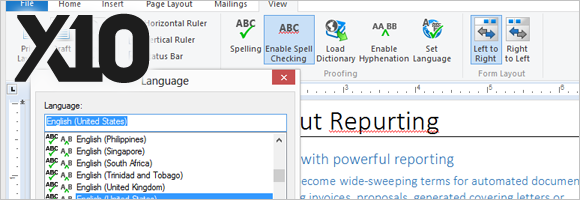
Version X10 implements many new language specific features that are very important for multilanguage, internationalized applications.
Language Regions
Regions of a document such as a characater, a word or complete paragraphs can be associated with a specific language. This is done automatically when the user switches the input keyboard, it can be set programmatically or using a new dialog box.
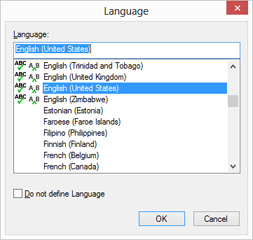
In combination with TX Spell .NET 4.0, the selected language is automatically used as the proofing language. Also, this language is used for the new hyphenation feature of TX Text Control and TX Spell .NET 4.0 to hyphenate words in the desired language.
The TX Text Control StatusBar has been updated to display the language at the current input position.
Multilingual Hyphenation
TX Spell .NET provides different methods to hyphenate words in multilingual documents. TX Spell .NET returns the hyphenation point before a specific divide position or an array of all hyphenation points for a defined word.
When connected to TX Text Control, the hyphenation works automatically based on the new language regions in TX Text Control.
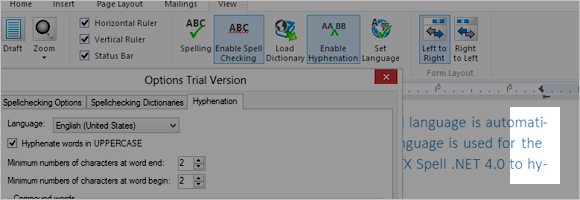
The ready-to-use dialog box can be used to specify the hyphenation options:
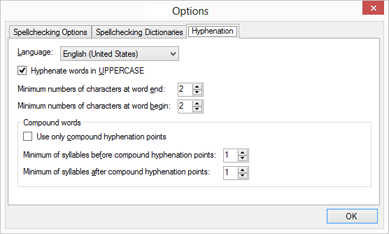
It is possible to define the number of characters before a hyphenation point and how many syllables should remain before and after a hyphenation point of compound words.
Full Right-to-Left Support: Hebrew and Arabic
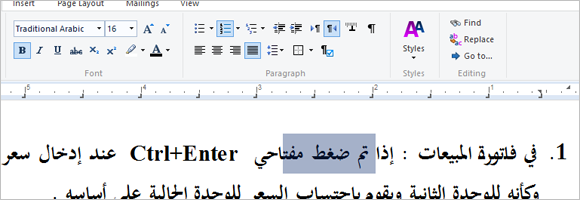
With version X10, TX Text Control now supports Right-to-Left text rendering for languages such as Arabic or Hebrew.
Each line in a document can be bi-directional - it can contain text parts written from left to right and text parts written from right to left. The paragraph formatting dialog box and the API has been extended to cover this new paragraph setting.
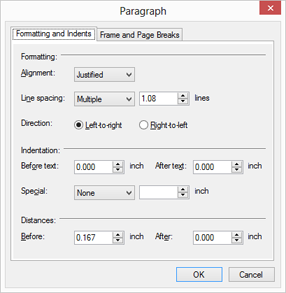
Stay tuned for more about TX Text Control X10 and TX Spell .NET 4.0.

